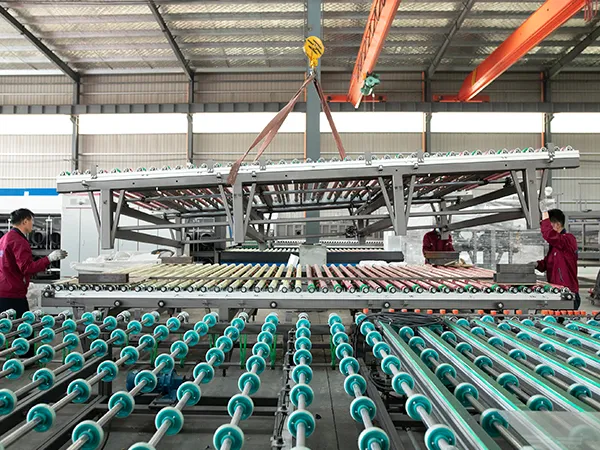Tempered glass is a type of safety glass that has been tempered in a horno de templado de vidrio to increase its strength and impact resistance. This process involves heating the glass to a high temperature (usually around 600-700°C) and then rapidly cooling it through a quenching process. Sin embargo, en algunos casos, tempered glass may crack or even break unexpectedly after quenching. If tempered glass breaks after quenching, especially if it happens repeatedly, it indicates a problem with your tempering process.
Causes and solutions for cracking of tempered glass after quenching

1. Temperature Problems:
Too High Quenching Temperature: If the glass is too hot before quenching, the rapid cooling can create excessive stress that exceeds the glass’s ability to withstand it, leading to breakage. The ideal temperature is slightly below the softening point of the glass.
Uneven Heating: If the glass isn’t heated uniformly, some areas will be hotter than others. The cooler areas might not develop sufficient stress during quenching, while the hotter areas are overstressed. This differential stress can cause fracture.
Incorrect Temperature Measurement: Faulty thermocouples or improper calibration of the temperature monitoring system can lead to inaccurate temperature readings, resulting in incorrect quenching temperatures.
2. Quenching Issues:
Quenching Rate Too Rapid: If the cooling is too fast, the surface cools and contracts much faster than the inner layers, creating extreme stress. Adjust the air pressure, nozzle configuration, or quenching time to achieve a more controlled cooling rate.
Uneven Quenching: Similar to uneven heating, uneven cooling leads to differential stress. This could be caused by:
Clogged Air Nozzles: Obstructed nozzles in the quenching system result in inconsistent airflow across the glass surface.
Uneven Air Pressure: Fluctuations in air pressure during the quenching cycle can cause variations in cooling rates.
Poor Nozzle Design: Inadequate nozzle design can lead to uneven air distribution.
Improper Glass Placement: The glass needs to be positioned correctly within the quenching zone to ensure uniform airflow around its surfaces.
3. Glass Quality and Preparation:
Surface Defects: Scratches, papas fritas, or other surface imperfections act as stress concentrators. Even minor flaws can become points of fracture during the tempering process. Thoroughly inspect the glass before tempering and discard any pieces with noticeable defects.
Edge Damage: Damaged edges are particularly vulnerable. Ensure the edges are smooth and free of chips or cracks. Edge grinding or seaming can help minimize stress concentration.
…
For more detailed information on why my tempered glass cracks after quenching, por favor visita: https://www.shencglass.com/en/a/news/tempered-glass-cracked-after-quenching.html


